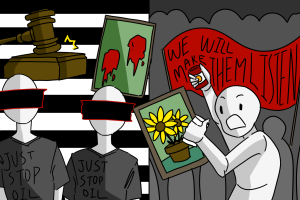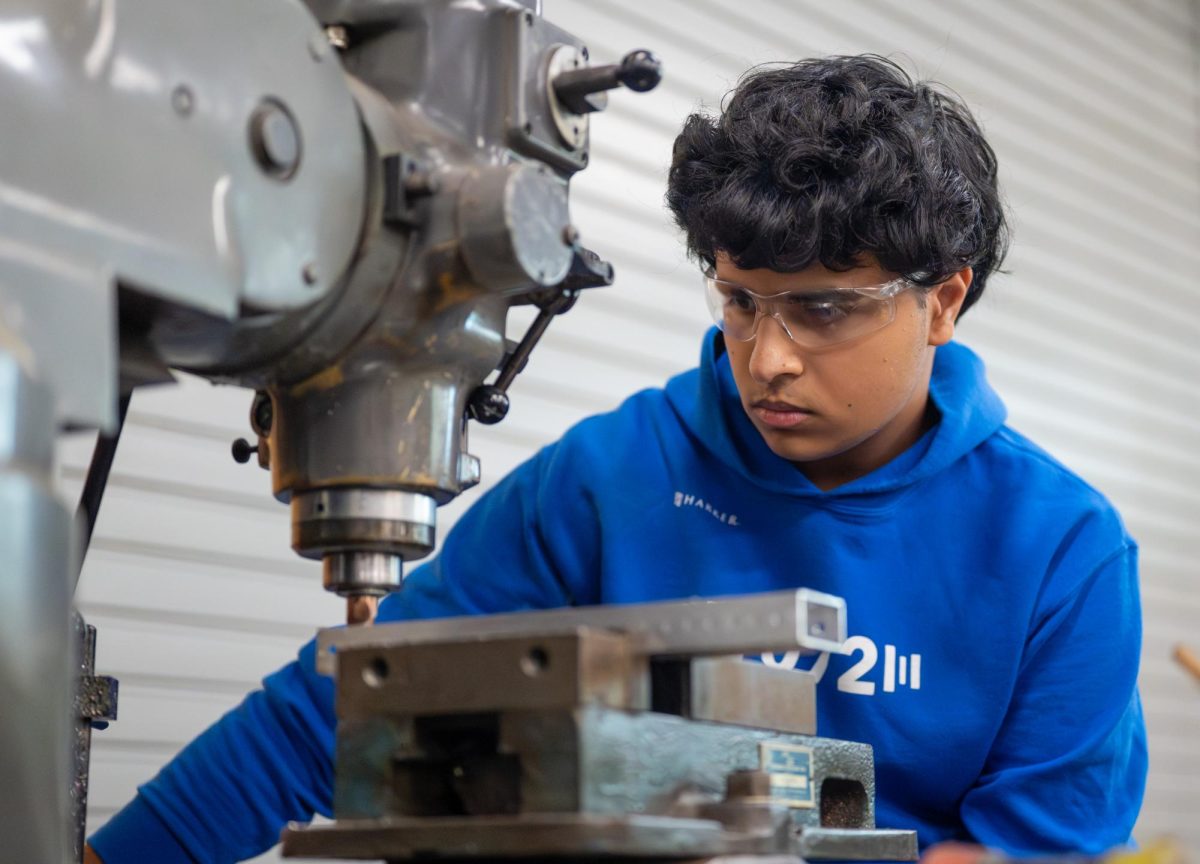Cause is more significant than action in climate activism
December 23, 2022
Cake thrown at the Mona Lisa, soup splashed onto Van Gogh, body parts glued next to paintings, shouts of, “What is worth more, art or life?” — all acts of protests by climate activists captured in global headlines in recent months. This year alone, more than two dozen acts of protest have occurred since May, with attacks on prominent art pieces, such as Van Gogh and Leonardo da Vinci gaining attention.
Over the years, the climate crisis has been the recipient of greater focus and attention in global news. Prominent personalities from climate activist Greta Thunberg to actor Leonardo DiCaprio have taken on the role of warning the public of the impending doom that the worsening climate crisis is bound to bring, and science cautions us of the fact that we have less than ten years before the world reaches a global temperature that will be irreversible.
However, climate activism has reached new heights. Climate activists and organizations have increased the intensity of their public displays for awareness, and as of late, these displays are attacks on valued pieces of artworks. Little to no damage is usually seen on these pieces due to the placement of protective glass, but the intention of the acts themselves have appalled many.
The disregard for these prized artworks shown by these activists has many asking one major question: Why do they do it?
In the eyes of these activists, there is no reason to respect artistic masterpieces when in a few decades, the climate crisis will worsen to the point where food security will decrease. In their public demonstrations, they present the fight for climate change reform as a very black and white question: Is protecting paintings and history more important than protecting our planet? This simplified view has spurred these activists to engage in disruptive protests in art museums this past year.
I have no issue with climate change activism — I myself believe that it is a real and pressing issue. I also believe that actions matter, and that basing an opinion of a cause based upon the action is understandable. However, people should pay more attention to the intention and cause behind the action. We should focus more on the why, and not the what. Although the actions of these activists are callous and disruptive, these activists are trying to bring more awareness to the climate crisis. The public also shoulders some blame for offering no second thought towards the motivation behind their actions, instead offering derisive criticism. Taking to Twitter, James Cleverly, British Foreign Secretary, summed up the general public sentiment, tweeting, “Let’s stop giving these attention seeking adult-toddlers the coverage they clearly crave.”
The issue with the protests of these climate activists is their decision to participate in disruptive acts by attacking historic artwork and making art a target of their cause. Public demonstrations should be done to draw people in to learn more, not turn them away from the organization, and in the process, the cause. However, actions do not necessarily reflect intention. Behind all the protests and public demonstrations, there is a legitimate and pressing cause. Many of the protests have been carried out by supporters of the European coalition Just Stop Oil, which firmly advocates for ending the use and production of fossil fuels in the U.K. The use of fossil fuels is a driving force behind climate change today, but even today, very few realize the implications that the continued use of it will have. The call for climate reform that these protestors represent has a globally widespread impact, and although these protestors should protest in less volatile manners, this is where the public can reconsider their opinions by looking into the why.
Looking into the why, and not the what, can provide a different perspective and questions in regard to these protests. What was the reason? What is the purpose and belief of this organization? Is it relevant? All these questions go unanswered, and instead, only the action itself is often picked apart. This is a cycle that can be applied to many extreme acts, but especially here. Although awareness was raised in a disorderly way, we should spend more time paying attention to the cause that motivated the disruption.
Were the activists justified in their actions? No. However, are the beliefs that they are supporting valid? Yes. We should discourage those that are disruptive when promoting their cause, but we should also look at the intention behind actions. In the end, every one of us can always take the extra step to look past the wrongs and into the why — genuine reason can always lie behind public appearance.


















![“[Building nerf blasters] became this outlet of creativity for me that hasn't been matched by anything else. The process [of] making a build complete to your desire is such a painstakingly difficult process, but I've had to learn from [the skills needed from] soldering to proper painting. There's so many different options for everything, if you think about it, it exists. The best part is [that] if it doesn't exist, you can build it yourself," Ishaan Parate said.](https://harkeraquila.com/wp-content/uploads/2022/08/DSC_8149-900x604.jpg)




![“When I came into high school, I was ready to be a follower. But DECA was a game changer for me. It helped me overcome my fear of public speaking, and it's played such a major role in who I've become today. To be able to successfully lead a chapter of 150 students, an officer team and be one of the upperclassmen I once really admired is something I'm [really] proud of,” Anvitha Tummala ('21) said.](https://harkeraquila.com/wp-content/uploads/2021/07/Screen-Shot-2021-07-25-at-9.50.05-AM-900x594.png)







![“I think getting up in the morning and having a sense of purpose [is exciting]. I think without a certain amount of drive, life is kind of obsolete and mundane, and I think having that every single day is what makes each day unique and kind of makes life exciting,” Neymika Jain (12) said.](https://harkeraquila.com/wp-content/uploads/2017/06/Screen-Shot-2017-06-03-at-4.54.16-PM.png)








![“My slogan is ‘slow feet, don’t eat, and I’m hungry.’ You need to run fast to get where you are–you aren't going to get those championships if you aren't fast,” Angel Cervantes (12) said. “I want to do well in school on my tests and in track and win championships for my team. I live by that, [and] I can do that anywhere: in the classroom or on the field.”](https://harkeraquila.com/wp-content/uploads/2018/06/DSC5146-900x601.jpg)
![“[Volleyball has] taught me how to fall correctly, and another thing it taught is that you don’t have to be the best at something to be good at it. If you just hit the ball in a smart way, then it still scores points and you’re good at it. You could be a background player and still make a much bigger impact on the team than you would think,” Anya Gert (’20) said.](https://harkeraquila.com/wp-content/uploads/2020/06/AnnaGert_JinTuan_HoHPhotoEdited-600x900.jpeg)

![“I'm not nearly there yet, but [my confidence has] definitely been getting better since I was pretty shy and timid coming into Harker my freshman year. I know that there's a lot of people that are really confident in what they do, and I really admire them. Everyone's so driven and that has really pushed me to kind of try to find my own place in high school and be more confident,” Alyssa Huang (’20) said.](https://harkeraquila.com/wp-content/uploads/2020/06/AlyssaHuang_EmilyChen_HoHPhoto-900x749.jpeg)








